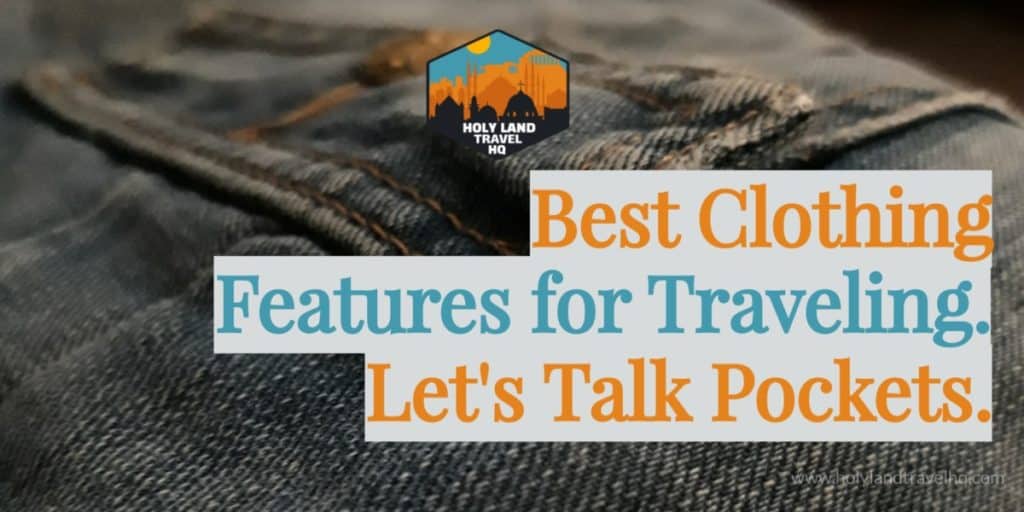
By now, you’ve probably already looked at clothing and gear for your Holy Land Tour. If you are anything like me, you’ve also gone to REI where you window shopped your way through an amazing adventure. And Indiana Jones was your sidekick.
You found the Ark of the Covenant, but you haven’t found the right pair of pants. Should you look for style? Comfort? Ruggedness?
When looking for a pair of pants for your tour, your top priority is safety. This means you want zippered pockets. More specifically, you want zippered welt pockets if you can find them.
Going on a Holy Land tour is an adventure of sorts. You might do a little hiking, but you’ll definitely navigate through crowded markets. Security should be on your mind.
Whether you hike or just meander the market on your tour, you want to keep your valuables in your pockets. And you want to keep unfamiliar hands out.
What is the purpose of this discussion?
When traveling we want to present a personal security posture that tells predators not to mess with you. The two parts of a security posture are gear and awareness.
How you prep your gear and clothing can make being aware much easier. It can give you peace of mind.
We’ll talk about awareness in another post. For now, let’s talk about pockets.
Types of Pockets.
There are a few different styles of pockets you will find when buying your wardrobe.
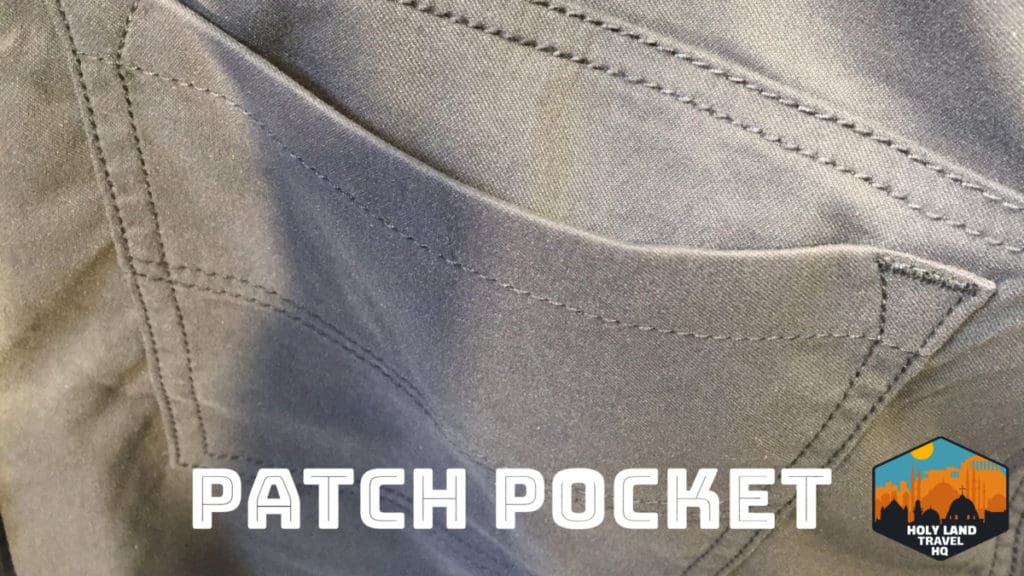
A patch pocket is a piece of fabric sewn on the garment with nothing securing the mouth. The sides of the pocket are sewn flat on the garment.
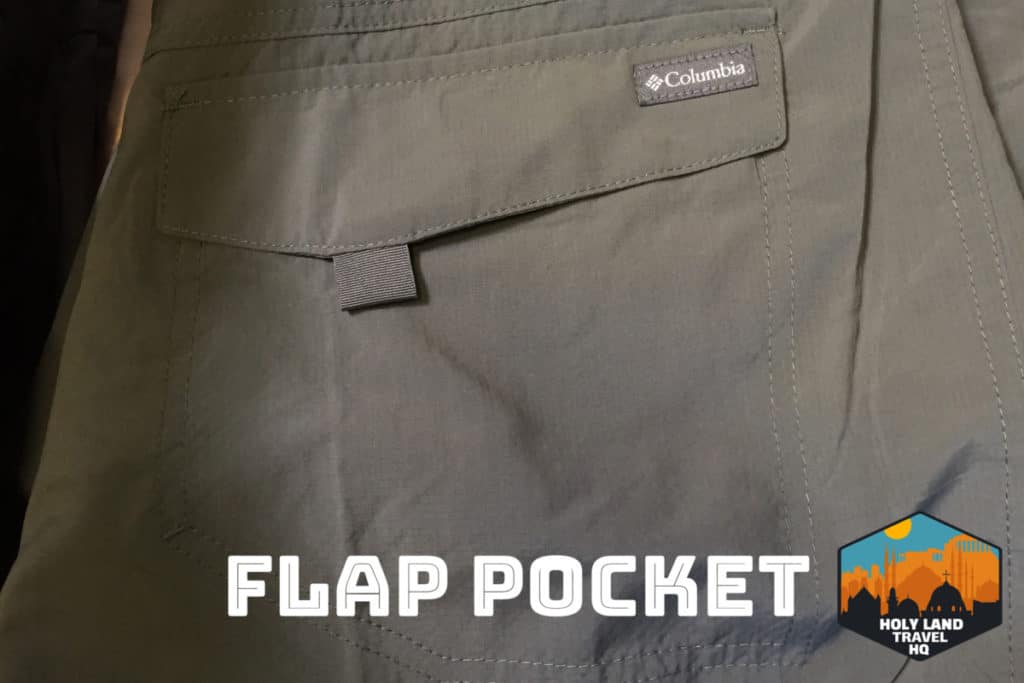
A flap pocket is a patch or welt pocket with a flap covering the mouth. They are often secured with a button or Velcro, or they merely cover the mouth of the pocket.
A gusset pocket is a flap pocket; however, two or more sides expand. Gusset pockets are a common feature on hiking and travel shirts. They are also used often for cargo pockets on pant legs.
Shirts tend not to be a target for pickpockets because their pockets are often in view of the wearer. However, we don’t want to put a lot of valuables in a shirt pocket unless it can be secured effectively. Our upper bodies tend to move more and valuables can slip out easier. Shirt pockets are a good way to compartmentalize your valuables, though.
A welt pocket is a slit in the garment. The pocket is on the inside and usually made of soft cotton. Or it is a patch pocket sewn on the inside. These pockets work well with zippers.
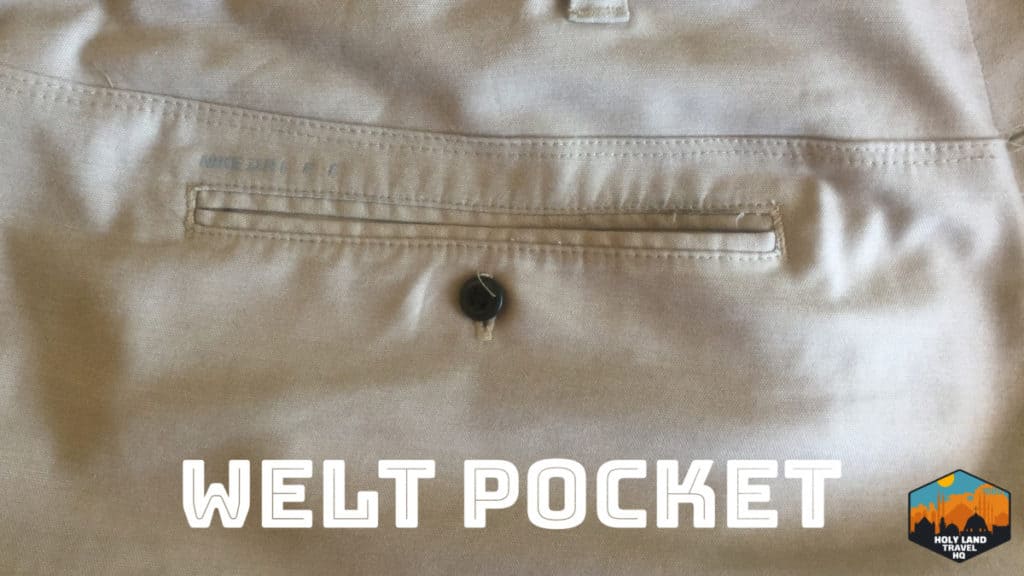
All pants come with pockets. There are also hiking skirts and some dresses out there with pockets as well.
It matters how your pocket is secured.
There are a lot of choices out there when it comes to lower body garments. Most travelers opt for hiking pants. I discussed hiking pants in an early post on what to wear for comfort (link to post). Hiking pants offer more aeration in hot and wet climates. But that’s not what we are talking about here.
When taking a stroll through the woods, a secured pocket keeps contents inside the pocket from flying out. The same is true while walking the streets of an unfamiliar city. But we’re also interested in keeping unfamiliar hands from getting in and taking our stuff.
A common rear pants pocket setup is a flap pocket with a Velcro patch. The Velcro latches together to keep the pocket closed. But this creates many problems for us.
Sometimes flaps don’t get secured properly, and contents fall out anyway. Some pockets have a small square Velcro patch that doesn’t do the job. Others might have two small strips that make opening the pocket annoying. Rarely do flaps have Velcro that cover the entire width of the pocket mouth.

Velcro can also lose its grip as it gets older, rendering it unreliable.
Other times, Velcro can get stiff and be hard to separate. As a result, your wallet can be in your hand, and you can’t get the flap open. You are suddenly in a vulnerable situation where your wallet is in the open for too much time. A pickpocket looking for a quick hit can ‘accidentally’ run into you, causing you to drop your wallet. Once your wallet, or valuable, is on the ground, you are ‘on your heals’ and no longer in a position of control.
How the pocket is integrated in the garment.
You might think this is a crazy observation, but welt pockets give me peace of mind. The reason for this is that contents in a welt pocket are wedged between the garment and your body. Adding a zipper to the mouth of a welt pocket creates a dual-layer of protection of sorts.
Patch, flap, or gusset pockets can sometimes ‘fall’ open, meaning the mouth spreads apart and settles. This is especially true in loose-fitting garments. An open pocket mouth can leave you constantly wondering if your valuables are still inside. You often won’t be able to feel the contents.
If a flapped pocket has too weak or too strong Velcro, you will be in a constant battle.
Special operations forces used to alter the pockets on their combat uniforms. Before the military caught on to the trend, special operators would sew Velcro the width of a flap to contain all contents in a pocket. This worked well for them because they were more interested in keeping contents in then keeping unfamiliar hands out.
For at least the last hundred years or so, military uniforms have come with a flap or flapped gusset pockets on upper body garments. Lower body garments typically come with flapped gusset cargo pockets on the legs and welt pockets with flaps on the rear. All pockets typically have dual buttons and Velcro patches now.
Zippers are rarely used on military uniforms because of excessive exposure to the elements. But we aren’t swimming ashore to storm a beach here. Nor are we living in the elements for extended periods.
Why zippered pockets?
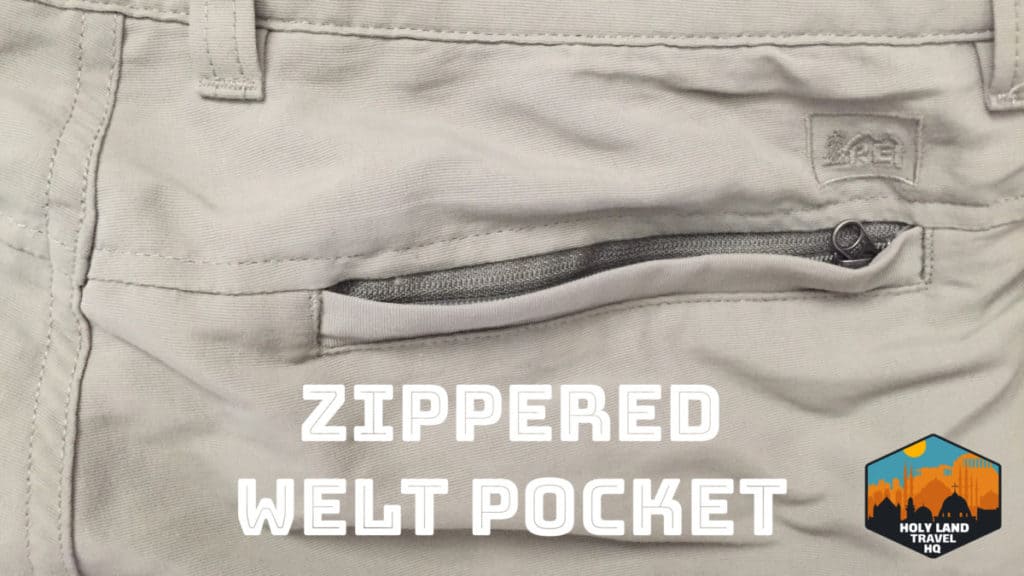
Zippers always cover the entire width of a pocket mouth. Always. Zippered pockets rarely come with a flap, but that is changing. Flaps tend to get in the way. But they can be a desirable security feature for welt pockets as long as they don’t use Velcro. It also helps when the flap has some length to it. You want the heel of your hand to be able to hold the flap while your fingers spread the mouth of the pocket.
When we use a pocket, we want to spread it open and slide our valuable in with one swift motion. Then sweep the zipper closed. When we feel the zipper hit the stop, we will know we are good.
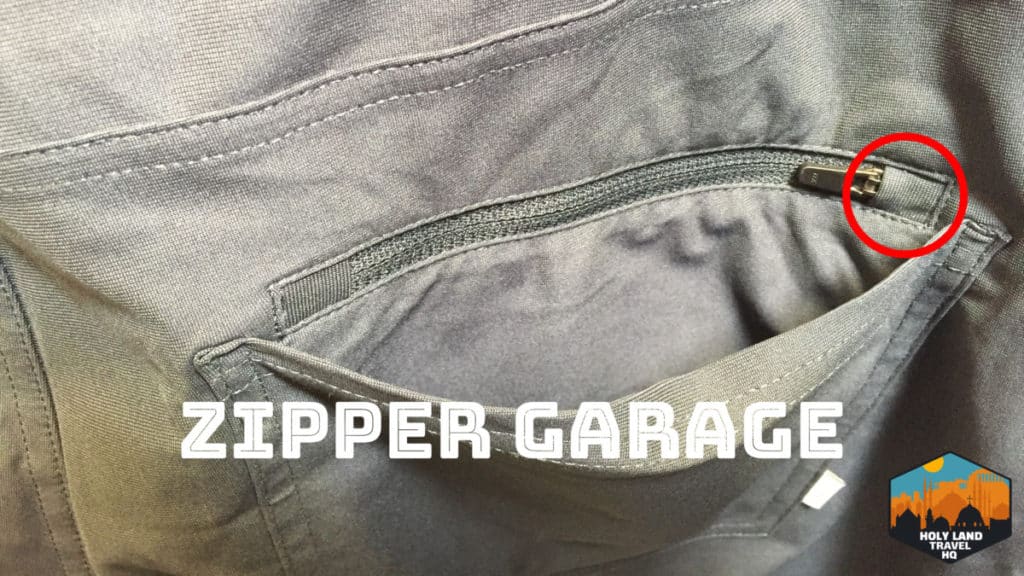
A good zippered pocket has a lip of fabric called a garage, which covers the slider and most of the pull when fully closed. The pull is the piece we grab to operate the zipper.
A fully zippered pocket is difficult for an interloper to infiltrate. Pickpockets are opportunists. They don’t spend a lot of time scoping a victim out or planning their attack. There are things they look for. Like cluelessness and lack of awareness.
When they attack, it’s swift. They’ll brush up against you and attempt to slip a hand into your pocket. They won’t spend time on a ‘re-attack,’ if they fail with you, they just move on.
When they attempt to slide their hand in a zippered pocket their hand will pass over the pocket. This is what we are trying to accomplish. Flapped pockets can do this as well.
I recommend zippered pockets because they close the same way every time. Velcro pockets close the same way most of the time, but not always. We want to create a repeatable and mindless habit.
If the sliders have the letters YKK on them, odds are they are highly durable. YKK is considered the top brand in the zipper industry (direct link to YKK).
Final thoughts.
Keep in mind that these are all tips and things to think about. You don’t need to be strict about my guidance here. If you like Velcro, then get Velcro. If you like a pair of pants but the pockets aren’t good enough, that’s fine. Consider a belt wallet.
I’ll talk about other options to secure your valuables in another post. How you develop your personal security posture will up to you.


